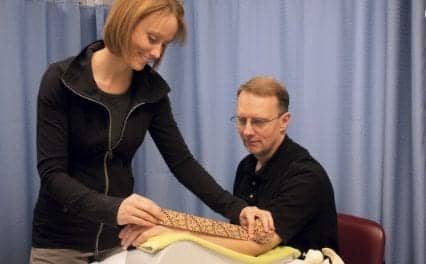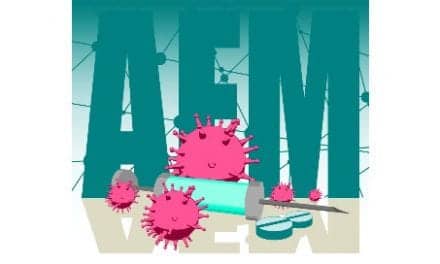by Will Boggs, MD
Last Updated: 2008-06-04 15:55:05 -0400 (Reuters Health)
NEW YORK (Reuters Health) – Interruption of major salivary ducts using vascular clips controls saliva and improves quality of life in neurologically challenged children, according to a report in the May issue of the Archives of Otolaryngology–Head and Neck Surgery.
"Parents of children with salivary control problems need to be encouraged to seek for solutions," Dr. Hamdy El-Hakim told Reuters Health. "But, rightly, they are reluctant to expose their children to painful, or repetitive, procedures or indeed medications associated with high incidence of side effects. The clipping technique is a good answer."
Dr. El-Hakim from The Stollery Children’s Hospital, Edmonton, Alberta, Canada and colleagues report on a modification of salivary duct ligation intended to simplify it technically, prevent subsequent canalization, and reduce postoperative morbidity. The procedure uses a transoral approach to apply vascular clips to the submandibular and parotid ducts.
"The operation rests on a good anatomical basis, the use of magnification to identify correctly the ducts, avoiding unnecessary manipulation that may lead to fistula formation and recurrence, and the use of available, easy, cheap, and less irritating vascular clips instead of ligatures," Dr. El-Hakim explained. "The technique is easy to teach and learn and executes the procedure in 30 minutes."
In a retrospective review of 18 consecutive cases, 8 of the patients had no drooling at all after surgery, the authors report.
Only 2 of 10 patients who had circumoral skin problems before surgery remained symptomatic after the procedure, the researchers note, and only 8 of 18 patients with choking spells before surgery still had episodes after surgery.
Shirt and bib changing were significantly reduced after the procedure.
Five caregivers reported embarrassment after surgery, compared with 13 before surgery, and only 1 of 13 patients who sustained aspiration pneumonias before surgery had an episode during follow-up.
All but one of the patients experienced an improvement in quality of life scores after surgery, the investigators say, with the remaining patient experiencing no change after surgery.
There were no complications from the procedure, and most patients required admission to the hospital for just one night. There have been no cases of ranula formation since surgery.
"Although the traditional approach recommends non-surgical treatment, there are groups of patients for whom we know their neurological challenge will not improve, and if the salivary aspiration continues, their lung function might be irreversibly affected," Dr. El-Hakim concluded. "This technique promises a high likelihood of a one-step, low morbidity, and effective way to prevent that and avoid more invasive approaches."
Arch Otolaryngol Head Neck Surg 2008;134:470-474.
Copyright Reuters 2008. Click for Restrictions




